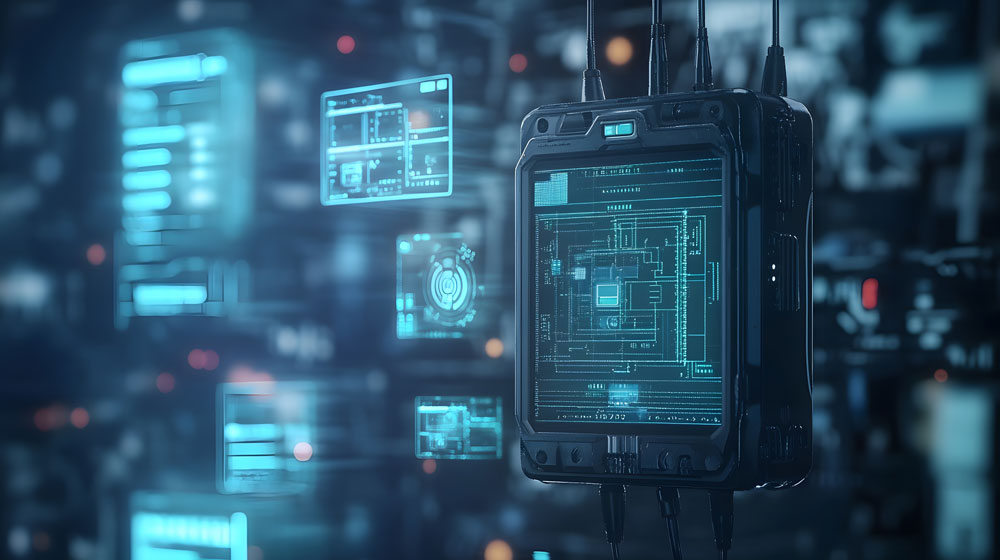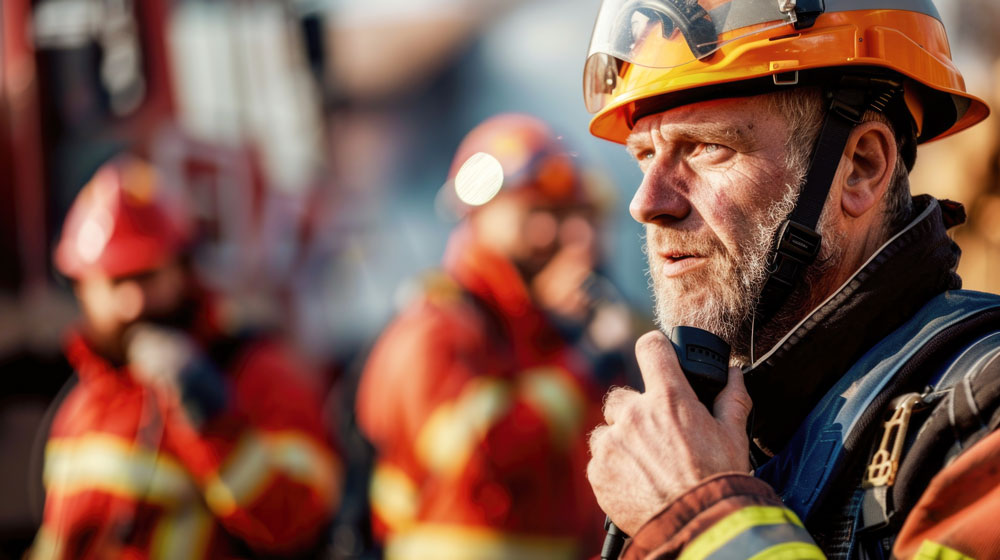
Effective public safety communications is the backbone of every police, fire, and EMS agency. For first responders to be able to help the public, they need to be dispatched to the right locations with the right equipment as soon as possible. After all, lives are on the line, and every second counts!
First responders have a name for this type of vital comms function. They call it Mission Critical Communications.
What Is Mission Critical Communications in Public Safety
Mission critical communications encompass wireless connections between officers in the field and their dispatch centers that help everyone respond to emergency situations in an efficient, appropriate, and effective manner.
Such critical response communications are carried over smartphones, tablets, and handheld radios — although the first two items are largely replacing the third. The data that these devices pass back and forth support ‘critical incident management’, such as managing a fire scene properly so that a burning building is evacuated quickly and firefighters are kept safe.
The quality of mission critical communications is what makes the difference between lives saved and lives lost. This was tragically proven during 9/11, where the inability of public safety agencies to communicate with each other resulted in warnings being missed, and first responder evacuations being delayed from the Twin Towers.
Effective Communication Matters During Crises
The example of 9/11 is not unique. History is rife with examples of crises made worse due to police, fire, and EMS agencies being unable to talk to each other and coordinate their actions during emergency situations,
Collectively, these negative outcomes led to the creation of the FirstNet Authority by Congress in 2012, and the creation of the FirstNet public safety 4G/LTE wireless network dedicated to mission critical communications soon after. Today, more than 30,000 US police, fire, EMS and other public safety agencies rely on FirstNet to carry their mission critical communications over seven million devices quickly, reliably, and securely.
How FirstNet Enhances Mission Critical Communications
Mission critical communications cannot succeed if people from different agencies can’t talk to each other, while anyone on the outside is able to break in and disrupt their conversations. This is why the best systems are able to support ‘interoperable communications’ while keeping hackers out. As such, effective mission critical communication systems are also secure communication systems.
FirstNet has been purpose-built to satisfy all of the points outlined above. This is why FirstNet is the most effective public safety communication system in the United States. This is also why the creation of FirstNet has substantially enhanced mission critical communications in this country.

Emerging Mission Critical Technologies in Public Safety
Technology is always on the march, and equipment associated with mission critical communications is no exception to this rule. Consequently, FirstNet is constantly upgrading its network capabilities and technology to ensure that its mission critical communications infrastructure is always up to date and never obsolete.
For example, the FirstNet Authority is spending more than $8 billion over the next decade to upgrade FirstNet to handle 5G traffic as well as 4G/LTE. This upgrade will ensure that FirstNet can support the latest public safety communications applications being developed by the private sector, in pace with the general wireless advance from 4G to 5G.
None of this $8 billion is coming from the government, by the way. It is all being paid by FirstNet subscriber fees.
Mission Critical PTT Communications
Another emerging mission critical technology is 3GPP-standard mission-critical push-to-talk service on Apple and Android smartphones, which are supported by FirstNet.
Push-to-Talk (PTT) voice is the classic handheld radio technology of the past, in which users simply push a button on their radios to talk. Mission-critical push-to-talk (MCPTT) brings the same one-button convenience and speed to smartphone users.
FirstNet’s version of MCPTT ensures that fire, police and EMS users can get through to their dispatch agencies as fast as possible each and every time. Because this MCPTT traffic is being carried on FirstNet, there are no delays or dropouts. Add in the fact that first responder traffic always comes first on FirstNet, and MCPTT can count on getting their messages through every time.
The quality of mission critical communications is what makes the difference between lives saved and lives lost
Data Analytics Advancements
How is FirstNet being used by first responders, and what can be done to the network to support their usage more efficiently and effectively? That’s a question that the FirstNet Authority has been asking since FirstNet was launched, and which it has been answering by analyzing the data of this usage on a regular basis.
In recent years, the quality of this analysis has been improved by the incorporation of artificial intelligence (AI) and other powerful software tools. The result: FirstNet’s performance is constantly being enhanced and adjusted to deliver ever better service to its users.
AI Making a Difference in Public Safety Communications
Beyond helping FirstNet perform better, AI is helping to improve the performance of 911 call centers across America. Specifically, non-emergency calls to 911 — the kind where no one’s life is in danger — are increasingly being handled by AI-enabled call answering systems. This leads to human operators being able to spend more time helping emergency callers, while providing better service to the public.
Securing the Future of Mission Critical Communications
Clearly, FirstNet is a vital tool in the provision of mission critical communications in America. But FirstNet can only keep doing its job past 2027 if the FirstNet Authority is reauthorized by Congress. First responders and their associations are calling on Congress to do just that.
Take the Public Safety Broadband Technology Association (PSBTA), for instance, whose members are US public safety professionals. “We want FirstNet to be reauthorized based on the FirstNet Authority’s record of putting first responders’ communications needs first,” said PSBTA Deputy Executive Director Michael A. Barnbeck. “Congress only set the reauthorization time limit 15 years ago because they didn’t know if FirstNet would work. Well it does, which is why FirstNet should be reauthorized. This is why Americans need to talk to their congressmen and senators, to tell them to reauthorize FirstNet — and this time for good.”
To hear why FirstNet should be reauthorized from an actual US first responder, go here.


Be the first to comment on "Understanding Mission Critical Communications for Public Safety"